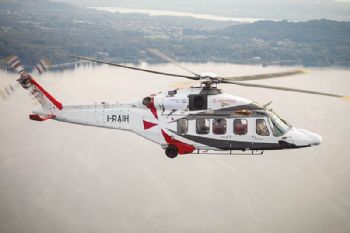
Safran Helicopter Engines has unveiled Aneto, a new family of turboshaft power plants in the 2,500-3,000shp range, with Leonardo Helicopters the first customer for an updated variant of its AW189.
The French engine specialist has been working on a new model above 2,000shp since its acquisition of Rolls-Royce’s 50% share of the military RTM322 programme in 2013.
Florent Chauvancy, Safran vice-president of heavy helicopter engine programmes, said: “We are launching not one engine but a complete family of engines to address market requirements.”
He says that the Aneto — named after the highest mountain in the Pyrenees — will be suitable for any rotor-craft in the 8- to 15-tonne range.
Drawing on research from Safran’s Tech 3000 demonstrator programme, as well as competencies brought in via its RTM322 acquisition, the company claims that the Aneto will provide a 25% power-to-weight ratio advantage over engines with a similar volume, as well as a 15% saving in operating costs.
The first variant — the 2,540shp -1K — will go into service in 2018 on the AW189K, as an alternative to the 8.5-tonne class helicopter’s current GE Aviation CT7 power plant, which is rated at 1,980shp at take-off.
Leonardo Helicopters says that the Aneto engine will provide better performance in hot and high conditions, but it has no plans to drop the GE engine.
The first flight of the AW189K took place in March, and the test aircraft (I-RAIH) has since accumulated about 25hr in 35 flights. Certification is expected in the third quarter of next year.
The Aneto has a four-stage compressor (with one centrifugal and three axial stages), a new combustion chamber featuring 3-D printed components and high-temperature-resistant materials, 3-D printed inlet guide vanes and a new-generation dual-channel FADEC.
It is also compatible with stop-start technology, although this will not feature on the -1K model, which is likely to be the simplest in the range.